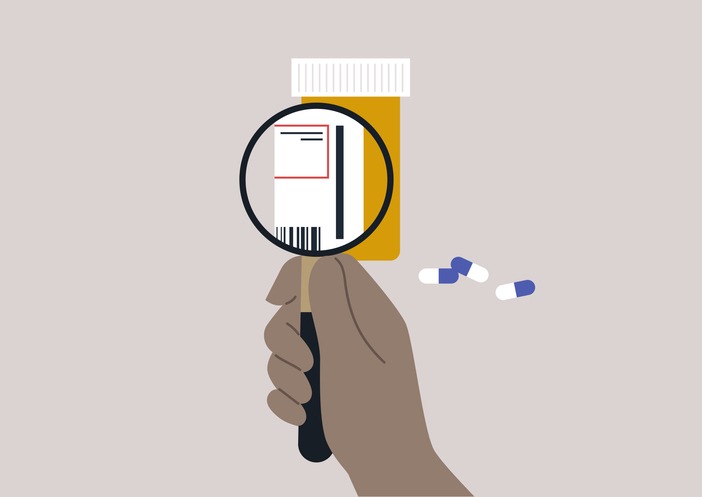
Most general practitioners would think prescribing oral NSAIDs with an oral anticoagulant (OAC) isn’t a particularly good idea – but what exactly are the risks?
CREDIT: This is an edited version of an article that originally appeared on NB Medical
Inherently GPs suspect this combination of drugs will increase bleeding risks, and indeed there are numerous studies to confirm this is the case with warfarin and NSAIDS.
But as we know OAC prescribing has changed a lot over the past 15 years. Firstly, prescribing rates of OACs have (rightly) increased due the incontrovertible evidence that, for the vast majority of people with AF, OACs have significantly more benefits in stroke reduction than harms of bleeding.
Secondly, OAC prescribing now means a DOAC rather than warfarin for most patients (as in Mike’s case), and interestingly there is little evidence examining the risks of co-prescribing NSAIDS with DOACs.
So, given we will have higher numbers of patients on DOACs for AF (and VTE indications), many of whom may develop musculoskeletal pain, and in whom there may be a temptation to consider NSAIDs, we have an important question – what are the risks if OAC/DOACs and NSAIDs are used together?
Step forward an important study examining just that question, originally published at the end of last year, but recently reviewed in the Drugs and Therapeutics Bulletin (DTB 2023;61:67). This was a retrospective cohort study using primary care records from the UK Clinical Practice Research Datalink and linked secondary care data.
They examined 3177 patients taking an OAC (warfarin or any of the DOACs) with co-prescriptions of NSAIDs with 3177 matched controls taking OAC without co-prescriptions of NSAIDs. The primary outcome was GI bleeding or stroke (including TIAs), with secondary outcomes including major bleeding or systemic embolism.
There were significantly more GI bleeds in those taking NSAIDs as well as OAC, with a substantial three-fold increased risk (HR = 3.01, 95% CI 1.63-5.55), with absolute increased risks going from 6.9 GI bleeds per 1000 person years (without NSAIDs) to 20.5 GI bleeds per 1000 person years (with NSAIDs).
The increased risk of major bleeds was similar. The increased risk of GI bleeds/major bleeds is not that surprising, but what did surprise me was the similar increased risk of stroke/TIA, many of which would be ischaemic, not haemorrhagic (HR = 2.71, 95% CI 1.48-4.96).
There were only small numbers of systemic embolic events which did not reach statistical significance, but there was a trend towards higher risk in those taking NSAIDs. What about PPI use? About a third of patients were on gastro-protective agents, but when excluded in the sensitivity analysis this made no significant difference to overall results.
This is an important study for a number of reasons. First, it was UK based and very much looked at typical primary care populations – there was a substantial co-morbidity burden in the cohort, with many on other drugs that can increase bleeding risks (e.g. aspirin and SSRIs), which reflects the multimorbidity/polypharmacy ‘norm’ in those on OAC.
Second, it examined all OACs including all DOACs and examined patients irrespective of OAC indication (most previous studies have looked at more specific indications e.g. AF or VTE).
Third, it looked at both bleeding and thromboembolic risks.
Fourth, it looked at robust prescribing data so NSAID use/duration was confirmed (some previous studies have relied on self-reported NSAID use). It is a cohort study, so residual confounding is always possible, but the risk of this was thought to be low.
One potential significant confounding variable not accounted for was over-the-counter (OTC) NSAID use, but OTC use would be more likely in the group not prescribed NSAIDs, so if this was the case this study would actually underestimate the risks of NSAID use.
In summary, this is an important study as it gives good data on normal UK primary care populations, which can be extrapolated into our day-to-day practice. It confirms the increased GI bleed/major bleeding risks when NSAIDs are used with OAC/DOACs, but possibly more importantly it also shows that NSAIDs seem to reduce the effectiveness of OAC/DOACs in stroke prevention, giving a ‘double-whammy’ risk.
The message to GPs and their patients is clear – you need to avoid NSAID use in those on OAC/DOACs; this combination increases GI bleed and major bleeding risk (which is not mitigated by use of PPI) as well as increasing stroke risk.
You also need to warn patients taking OAC/DOACs not to be tempted to use OTC NSAIDs. Mike is very understanding – he’d assumed there might be a bleeding risk, which he might accept, but he absolutely does not want to increase his risk of having a stroke, so is happy to avoid the naproxen and see if he can ride out his knee pain in other ways.


Be the first to comment